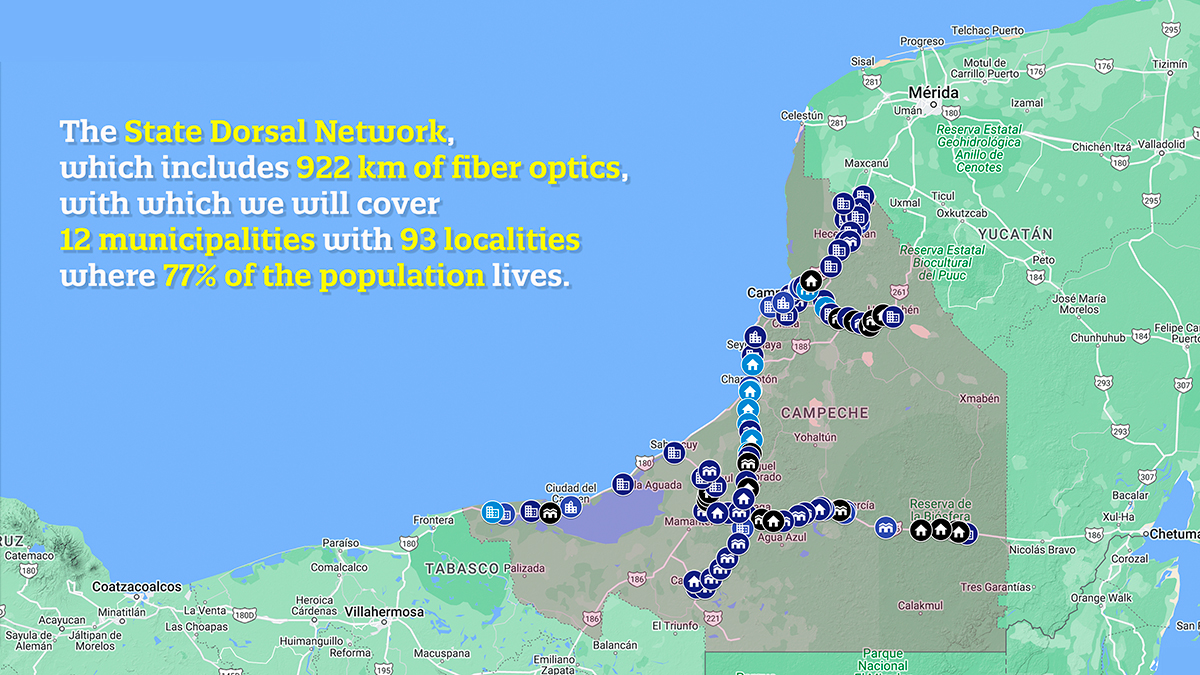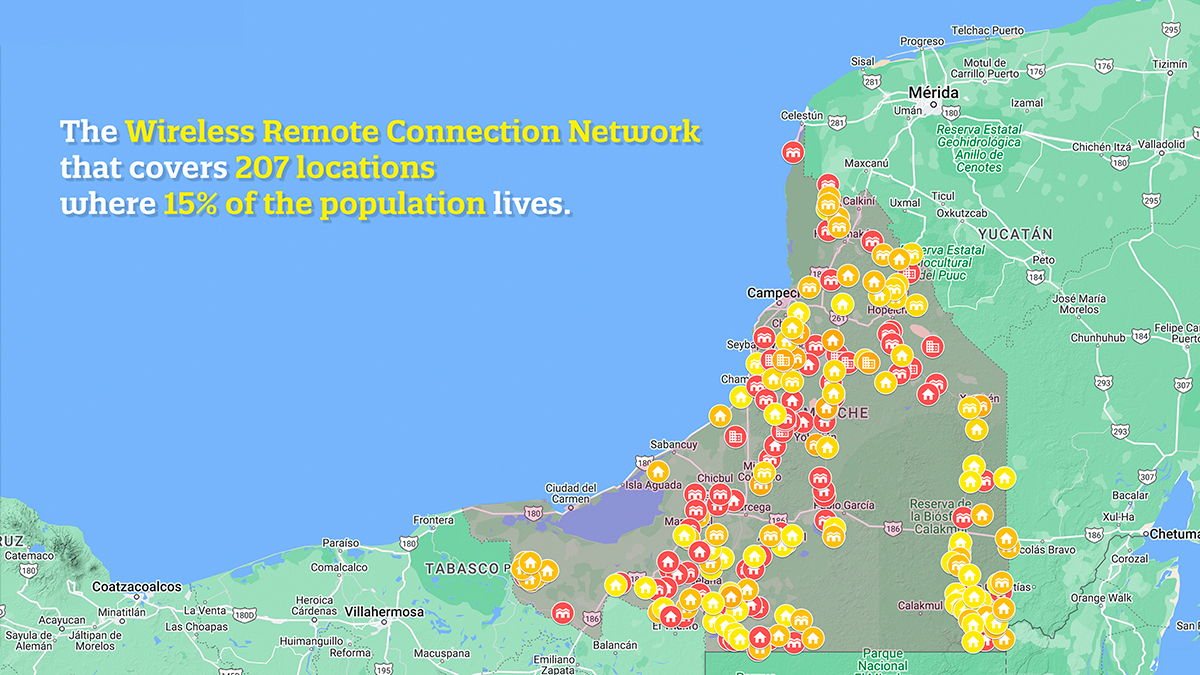Sustainability
The connectivity for all project is sustainable thanks to the planning of the installation of the Public Digital Infrastructure necessary for internet access, creating two services to cover 300 localities where 92% of the population of Campeche lives:
1. The State Dorsal Network, which includes 922 km of fiber optics, covers 12 municipalities with 93 localities and 77% of the population.
This system provides a secure and resilient network with a central administration that automatically controls all access points, providing the necessary connectivity for the population to carry out their educational, health or government tasks.
It is also sustainable due to the strategic alliances with public and private institutions, where the public institutions, through collaboration agreements, allowed us to use their infrastructure and the private institutions provided us with all the necessary support to carry out the project with the highest technology and at the best possible price.
We take advantage of the telecommunications infrastructure installed in public buildings, mainly towers and water tanks, for wireless internet distribution to schools, libraries, health centers and public parks.
We install the broadband distribution equipment in the same space where the higher education institutions have theirs, sharing air conditioning, security personnel and electrical installation.
With the State Dorsal Network, we establish a central administration of the network, saving a significant amount of financial resources by reducing the number of telecommunications service contracts per public building.
With the Wireless Remote Connection Network, we brought free connectivity to rural and remote places where schools used to contract connectivity services at very high prices from telecommunications companies that charged them for the cost of infrastructure installation; and the population spent around 10% of their salary to be able to communicate by buying this service from unregulated entrepreneurs who have very high prices.
The savings generated in internet services for local institutions and government offices, together with the reduction in transportation costs due to the use of connectivity using voice and data applications, videoconferencing and visualization of educational content, allow us to cover maintenance costs. This financial self-management, combined with the positive social and economic impact, ensures the long-term viability of the project.


